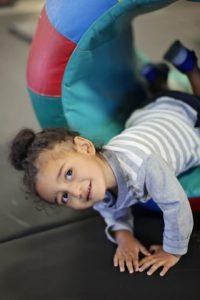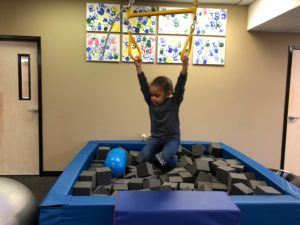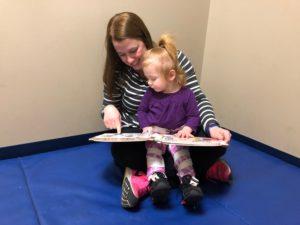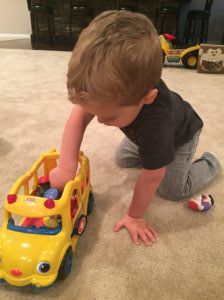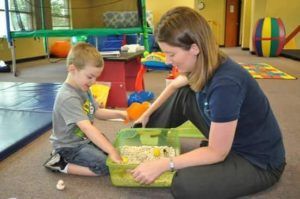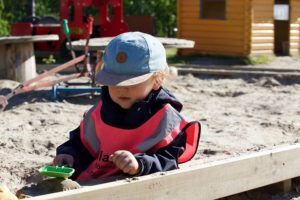child development
What is it?
A tool to help parents know what their child should be doing and when. 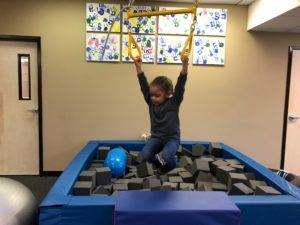
How does it work?
It is simple. Simply plug in your child’s birthdate. The gross motor, fine motor, language and sensory tasks that your child should do at that age will pop up. Answer the questions indicating what your child can and cannot do.
After submitting the tool, you will receive an email with tips and tricks on how to help your child at home. You also receive a FREE developmental checklist of all the skills a child should do between the ages of 1 and 6 years old.
Practice these age appropriate skills with your child. We hope you have success challenging them!
Let us know if we can help you.
Why did ABC Pediatric Therapy develop this tool?
ABC found that many parents do not know what to encourage and when. We want to help! This tool will teach you what toys to have and what skills to challenge at what age. Educate yourself! Be the best parent you can be! Challenge your child’s skills!
Who would find this tool useful?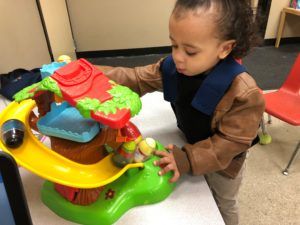
Any parent of a child under the age of 6 years old.
You can find this Interactive Screening Tool at checklist.abcpediatrictherapy.com. We hope you find it useful!
Visit our website at https://www.abcpediatrictherapy.com for more information on child development.
Read MoreEver wonder what you would write if you could write a letter to your child?
Our children are our most precious gift. What would you say if you were to write a letter to your child?
I know I would want to inspire. I would not tell them they can be anything they want to be. Instead I would teach them to truly inspect. What are you good at? What are you not so good at? Do more of what you are good at. Learn more about what you like. Network with those who do what you want to do. Then go after it. Do not stop until your goals are met.
Teach them that by helping others you help yourself.
Know thyself. Know what you want and what you need and go after it.
Set goals. Don’t just set goals. Strive to reach them. Make it NOT an option NOT to meet them. Break long term goals into several short term goals and go after them all.
Let them know that problems are just barriers to be overcome.
Encourage each to own their mistakes/their problems and learn from them rather than blame others. This will push you to be the leader I know you can be. You will learn to break a problem down into tasks to be completed and soon the problem becomes a solution. Then this child will look at each problem as merely an inconvenience that will be overcome. Each problem will be a barrier that they will remove. My child will be able to minimize the stress in their life as they will be able to solve problems.
I will show them that communication is vital to any successful relationship. In fact, believe it is the reason most relationships fail. Know your wants and needs so you can communicate them to those that are important to you. Then be a good listener. Understand the wants and needs of those important to you and work to meet them. Be flexible as wants and needs can and will change on both sides. That is ok. Just be open to change and be willing to do your best to give those you love what they need.
Above all love. Love in abundance and it will come back to you.
What would you write in the letter to your child?
Read More
By the time a toddler has a vocabulary of at least 30-40 words, they begin to put words together into 2-word phrases (the child must be USING the 30-40 words in spontaneous speech to comment/request/label, not just imitating). The general “rule of thumb” is that at age one, children use only ONE word to communicate, then at age two, they use TWO words, by age three, they are using THREE or more words in sentences (requesting/commenting/asking & answering questions). I find myself using the following strategies right now with my 24-month-old and thought I’d share some ways to help increase the 2-word phrases in your toddler’s vocabulary.
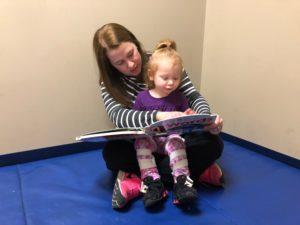
- One simple way is to build phrases using words your child already has in their vocab.: Does your child have some functional words associated with mealtime, bedtime, playtime etc.??? Try adding MORE and PLEASE to those words. For example, “more juice”, “help please”, “out please”. “more crackers”, “up please”.
- Incorporate greetings to build phrases: “Hi daddy”. “bye-bye nana”

- Model phrases throughout your daily routines, commenting on what is happening or what your child is doing, “night-night baby”, “go out”, “want up?”, “purple ball”, the more these phrases are modeled, the greater the chance your child will begin to imitate!
- Incorporate “automatic” phrases as well: For example, “I did it”, “this one”, “that one”, “my turn”, “let’s go”, “no mine”
- If you notice that your child isn’t quite catching on to 2-word phrase imitation, begin by repeating single words in a string, for example, “go-go-go!”, “up-up-up”, “night-night” to see how they respond.
If you have concerns about your child’s development, visit our webpage at https://www.abcpediatrictherapy.com for more information.
Written by: Christina Sanford, MA, CCC-SLP
Read MoreWith the holiday season fast approaching, many of us are beginning to think about the gifts we need to buy and what we hope to receive. It’s easy to get caught up in the latest trends of toys and technology, but one gift that keeps giving are books. Yes, books! Books may seem old-school to a few, but understanding the gift and power a book has is anything but boring. Reading books aloud to children offers many benefits to their development: books allow for more exposure to language, can increase a child’s vocabulary, and can increase a child’s imagination. Reading books early in life can help create a love of reading, which can last a lifetime.
There is always a new adventure to find behind every book. When children are read to regularly, they often have a larger vocabulary, understand more complex words, and have a better understanding and use of grammar. Reading books also helps children understand concepts such as letters, rhyming, identifying objects in pictures, asking/answering questions, and provides quality time for you and your child. When should you start reading to your child? Literacy skills can begin as early as 3-months of age, which may be seen when your child shows interest in a book by patting or chewing on it. This does not mean that parents need to begin reading to their children at 3 months of age, but it should let parents know that their child is beginning to develop literacy skills by being interested in a book. Some studies have indicated that the best time for parents to begin reading to their child is at around 8 months of age.
So, let’s talk about some great books and where to find them.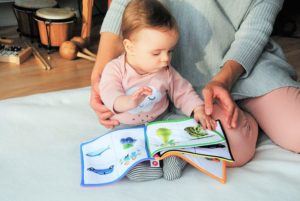
Beginner Readers-under 12 months through toddlers
A fan favorite is of course the bedtime story “Goodnight Moon” by Margaret Wise Brown, who tells the story of a bunny saying goodnight to everything around it. Additional books may include the beloved Dr. Seuss books such as, “Oh, the Places You’ll Go”, “The Cat in the Hat”, “Green Eggs and Ham”, “One Fish Two Fish”, etc.; the list of Dr. Seuss books goes on and on! More books for beginner readers may include “Curious George” by Margaret Ray, “Goodnight Gorilla” by Peggy Rathman, “Brown Bear, Brown Bear, What do you see?” by Bill Martin Jr. and Eric Carle, “The Very Hungry Caterpillar” by Eric Carle, and “Guess How Much I Love You” by Sam McBratney and Anita Jeram.
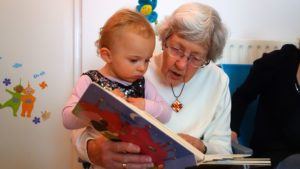
Pre-school and Kindergarten Age Readers (age 4+)
Some great books for slightly older children include: “Clifford the Big Red Dog” series by Norman Bridwell, “If You Give a Mouse…” series by Harper Collins, additional Harper Collins books such as “If You Give a Moose a Muffin”, Dr. Seuss books, “Little Critter…” series by Mercer Mayer, “Pete the Cat” series by Eric Litwin, and Berenstain Bears” by Stan Berenstain and Jan Berenstain
Elementary Age Readers: 1st Grade and Above
For children that are in the 1st grade or higher-grade levels, some books that they may enjoy include: “Magic Tree House” by Mary Pope Osbourn, “Junie B. Jones” by Barbara Park, “Magic School Bus” by Joanna Cole, “Dog Man” by Dav Pilkey, and “Captain Underpants” by Dav Pilkey.
Where to Find Books?
Books can be found in many different stores and online. The price of the book you are looking for may depend on where you buy it. Stores like Walmart, Barnes and Nobles, Half Price Books, and Target typically offer a larger selection of books at a reasonable price. Nowadays, it is easy to find and buy the book you are looking for online; sites such as Amazon offer convenient searches to find exactly what you want and are also reasonably priced. Parents can also buy books directly from the author’s or publisher’s website.
Buy a Book, Give the Gift of a Lifetime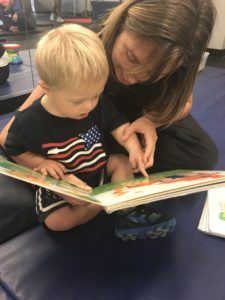
Books and the ability to read are gifts that lasts a lifetime. Books improve vocabulary, imagination, and literacy skills that will continue throughout a person’s life. As the holiday season approaches, consider getting your child or children some awesome books and open them up to a whole new world. A new adventure awaits behind every page! Happy Reading!
“The more that you read. The more things you will know. The more that you’ll learn. The more places you’ll go.”-Dr. Seuss
Find more books from pre-k through grade 9! https://shop.scholastic.com/parent-ecommerce/featured-shops/books-by-grade.html
If you have questions about your child’s development, visit ABC Pediatric Therapy Network’s website at https://www.abcpediatrictherapy.com
Read More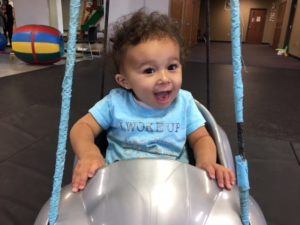
| By 6 Months | · Does not laugh or squeal · Does not look toward new sounds · No eye contact with parent |
| By 9 Months | · Has limited or no babbling |
| By 12 Months | · Does not point to objects · Does not use gestures such as waving |
| By 15 Months | · Does not have “first” word · Does not respond to own name |
| By 18 Months
| · Does not use at least 6-10 words consistently · No imitative skills (gestures or verbal) |
| By 20 Months | · Does not follow simple directions |
| By 24 Months | · Has a vocabulary of less than 50 words · Has decreased social interactions · Not combining words |
| By 36 Months | · Strangers have difficulty understanding what the child is saying · Short utterances only; limited conversational skills |
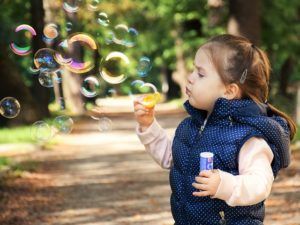
If you have questions about your child’s development, visit our website at https://www.abcpediatrictherapy.com
Written by: Christina Sanford, MA, CCC-SLP
Read More
The holidays are just around the corner and family and friends will be wondering what to get your child this year. With hours spent at school, popular video games and TV shows, children are sitting more and more. This year consider some of the following ideas to get your child moving and help support their development!
Gift ideas for Elementary aged children:
-kinetic sand or sand box with shovel and bucket
-make your own sensory bins: fill containers with beans, rice, water beads, etc and hide holiday items inside for your child to find
-Print your own Christmas songs with movement book such as this one from: https://www.fantasticfunandlearning.com/christmas-songs.html
-cookie/gingerbread decorating kit
-Puzzles
-velcro dart board
-bean bags – great for a variety of games such as a child sized corn hole game or large-scale tic tac toe
-social skills board game
-fine motor tools kit
-Bike
-building sets such as lego or playmobile
-swing set or single swing that can be used indoors
-playground set
-toys with latches and keys
-chalkboard/dry erase board with writing tools and magnets
-art supplies
– lacing kits
-sports kits (goal with soccer ball, t-ball set, golf set, hockey sticks and net, basketball hoop, etc)
-get creative with obstacle courses to get your child up and moving: you can wrap your own kit with balance discs or domes, hurdles, tunnels, etc. You can also use household items such as cushions and steps to set up during play time. Doing a puzzle by crossing the obstacle course to place it in, is a fun way to make your gifts even more interactive
-put a holiday spin on household favorites. For example, if your child loves playdough, you can make your own candy cane dough, put tinsel/sparkles inside of the dough, or make your own slime!
If you have questions about your child’s development, visit our website at https://www.abcpediatrictherapy.com
Read MoreComing up to the holiday season, many parents have questions about the best toys for their toddlers. Our day to day routines have evolved to promote children spending time in “containers.” This can be sitting in a car seat, jumpers, activity chairs, long periods in high chairs, etc. While convenient and necessary, it is also important to encourage your child to have plenty of breaks from these devices and get them moving around and playing with toys that stimulate different body systems. This holiday season, consider some of the following ideas to help promote your toddler’s development:
- Wooden blocks/mega blocks
- Connecting toys such as pop beads
- Stacking peg board

- Stacking rings
- Activity tables to promote standing and cruising
- Bubbles

- Make your own sensory bins; fill different containers with beans, rice, cereal, water beads, etc and hide holiday objects to find inside
- You can make your own Candy Cane cloud dough for a themed option. Recipe here: http://www.growingajeweledrose.com/2012/12/candy-cane-clouds-sensory-activity.html
- Playground ball, soccer ball, basketball, etc.
- Art station
- You can set up a station to play with puff paint or shaving cream and “draw” with fingers; this idea works great on a mirror or flat, easy to clean table surface
- Non-toxic art supplies
- Palm grip crayons
- Large chalk

- you can make your own chalkboard table by painting an existing small table with chalkboard paint
- Easel
- Sand box with pail and shovel
- Dress up box
- Board books
- Simple jigsaw puzzles
- Musical instruments – you can look for toy versions that pair light and sound when playing the instrument
Remember not all games/toys have to be costly or expensive! Time and time again, parents say their children love playing with household items. Get creative by putting a holiday spin on toys and games your children love. Feel free to share your ideas with other parents on our facebook page….
If you have questions about your child’s development, please call us at 513-755-6600 or visit our website at https://www.abcpediatrictherapy.com
Read More Skip to content
Skip to content
